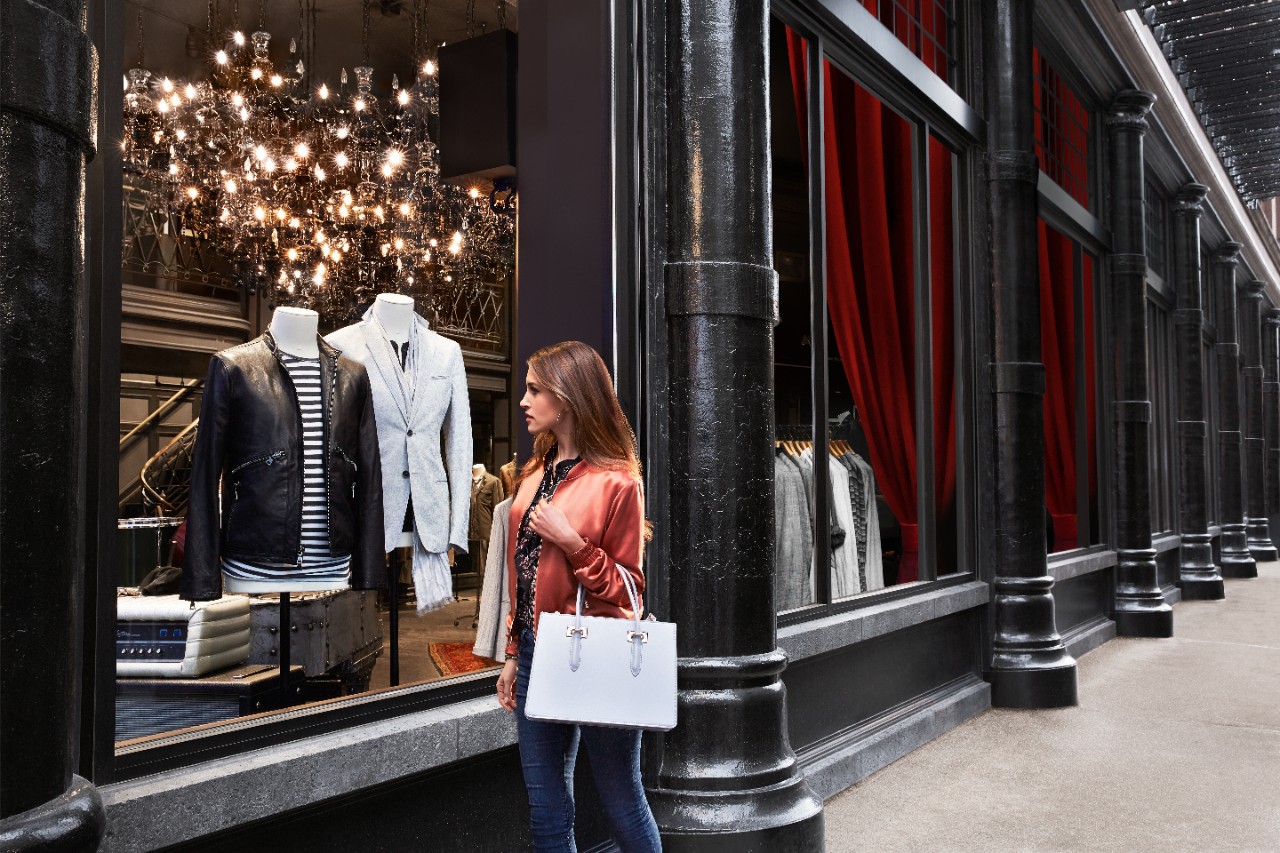Glass for storefronts
Provide a clear, unobstructed viewing experience

Retail outlets such as high-end fashion and jewellery stores, furniture and car showrooms, as well as restaurants and hotel lobbies, all share a common need: to give customers and passers-by a clear, unobstructed view of displayed products and inside spaces. This means storefront glass should offer the lowest possible reflection and glare combined with the highest transparency. In the daylight, storefront glass can act like a mirror, with customers struggling to see clearly products within storefront displays and deeper within the store. The need for brands to present themselves attractively and be identified appropriately is greater than ever, and the storefront has a key role to play in catching the attention of passers-by.
Which type of glass should be used for storefronts?
In addition to offering maximum visibility by reducing reflections and glare, glass for storefronts should also provide safety, security, durability and UV-protection, as well as noise reduction and thermal insulation if required.
In order to select the right glass for storefronts, several factors should be considered:
Help limit visual disturbance
Fewer reflections in the glass can help increase the perceived value of displayed products. The entire shop becomes the display, as the glass allows potential purchasers to view much more than what is directly behind the glass. Reflections can fade out colors of furniture and clothing and the products lose their impact. The mirror-like effect can create a barrier between the street and entering the shop. Guardian Glass recommends using an anti-reflective glass to help limit visual distortions and create open, welcoming shops, restaurants, hotel lobbies and showrooms.
Objects displayed behind the storefront glazing should be presented at their best. Using a glass with a very high light transmission and color rendering index (CRI) allows truer and more natural views through the glass. Guardian anti-reflective glass provides a CRI of 99, which means that the colors you see through the glass are almost exactly those you would see without glass (a CRI of 100 would mean perfectly true colors).
The use of large glazing in storefronts can also help optimise the viewing experience for customers. Larger size glass panels require less framing, allowing displayed products, restaurant interiors and hotel lobbies to be showcased to their fullest potential.
Provide safety & security
Retail storefront valuables need to be protected from intruders. Combining the benefits of an anti-reflective glass with those of laminated glass can help reduce the risk of intrusions and break-ins, but can also help reduce the risk of injury to people if they accidentally fall onto the glass. Guardian anti-reflective glass can be heat treated and is available on laminated glass for safety and security applications.
Optimized light transmission
As the light transmission of glass increases, the more UV rays pass through the glass, which could potentially damage any displayed products.
The interlayer used in laminated glass can absorb up to 99% of the damaging UV rays which can be responsible for up to 50% of fading. This protection means that interior surfaces and furniture are likely to last longer.
Want to know more about glass?
Guardian offers you a wealth of technical notes, tools and online learning to enhance your knowledge about glass and help you specify the most appropriate glass for your project. Connect to the Resource Hub to learn more!
Our glass product for storefronts:
-

Guardian® Clear
Guardian Clear glass is a fundamental building block for many different types of architectural and interior application. It's a glass that’s particularly valued for its high light transmission, optical clearness and adaptability.
See more -

Guardian UltraClear®
Guardian UltraClear® is a low-iron glass with a brilliantly clear, neutral color that offers incredible aesthetic benefits. It can be used for any application, but is especially suited as a base glass for architectural, interior and specialty applications.
See more -

Guardian CrystalClear™
Take the barely there look of low-iron glass to more places. Guardian CrystalClear glass delivers clarity and color neutrality beyond standard clear glass. More affordable than conventional low-iron glass, it’s a win for aesthetics and aspirations you can bring to life.
See more